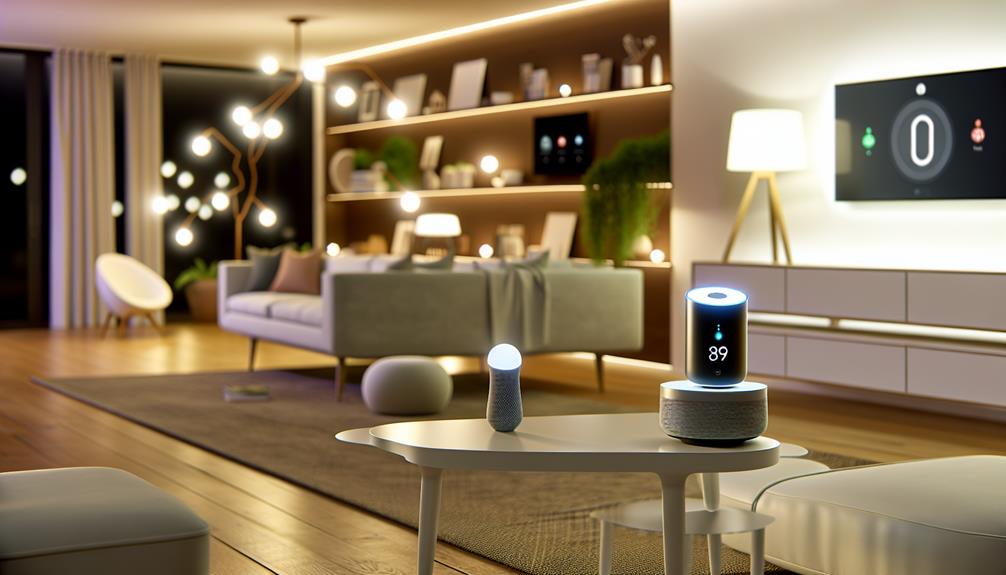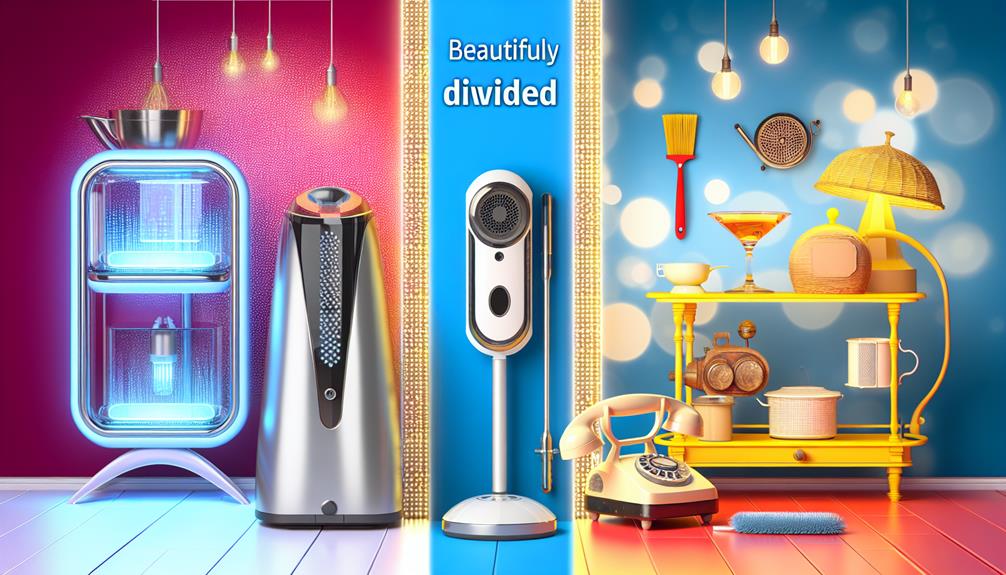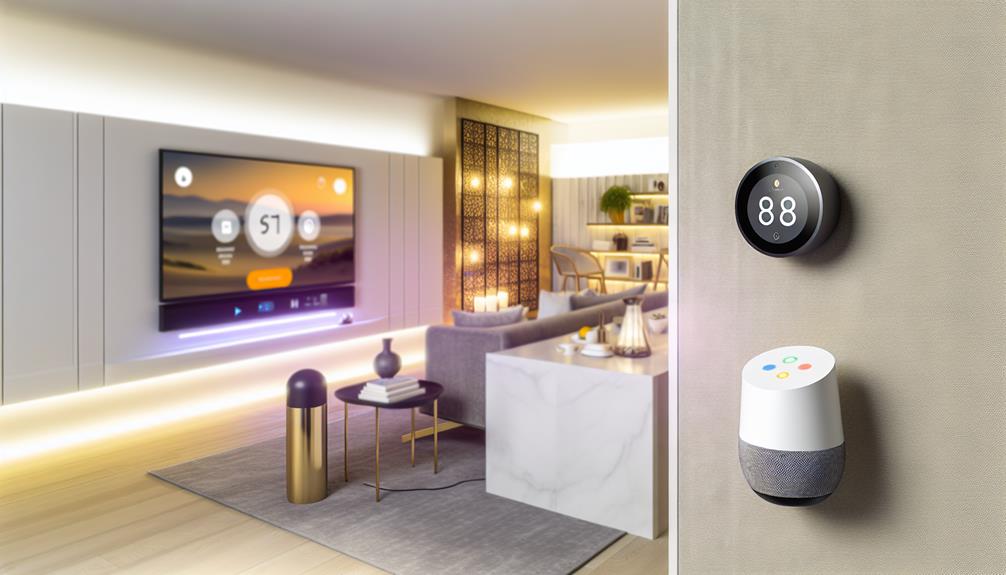Top Smart Devices Enhancing Elderly Care Today
As the elderly population continues to grow, the integration of smart devices into their care regimens has become increasingly important. Tools such as voice-activated assistants, smart medication dispensers, and fall detection sensors are transforming the landscape of elderly care, promoting independence while ensuring safety and well-being. These technologies not only facilitate daily tasks but also provide essential support for families concerned about their loved ones. However, the implications of these innovations extend beyond mere convenience—exploring their full impact raises important questions about the future of elderly care and the role of technology within it.
Key takeaways
- Voice-activated assistants promote independence, facilitate communication, and combat loneliness for seniors through hands-free technology.
- Smart medication dispensers ensure timely medication adherence with reminders and tracking features, enhancing overall health management.
- Home monitoring cameras provide real-time surveillance, ensuring safety while respecting the privacy of elderly individuals.
- Fall detection sensors alert caregivers or emergency services when a fall occurs, significantly enhancing safety and peace of mind.
- Smart thermostats improve comfort and energy efficiency by allowing remote temperature monitoring and automatic adjustments based on preferences.
Voice-Activated Assistants
Utilizing voice-activated assistants has emerged as a transformative solution in elderly care, enhancing both independence and safety for seniors.
These devices leverage advanced voice recognition technology, allowing seniors to engage with their environment hands-free. This capability is particularly beneficial for individuals with mobility challenges or cognitive impairments, enabling them to access information, manage daily tasks, and maintain social connections more easily.
Moreover, voice-activated assistants offer a sense of companionship, reducing feelings of loneliness that can often accompany aging. By facilitating communication with family and friends, these tools help seniors feel more connected and supported in their daily lives.
However, the deployment of voice-activated technology does raise important concerns regarding user privacy. As these devices continuously listen for commands, ensuring the security of sensitive information is paramount.
Manufacturers must prioritize robust data encryption and transparent user agreements to reassure users that their personal data is safeguarded.
Smart Medication Dispensers
Managing medication can be a challenging task for many seniors, but smart medication dispensers are revolutionizing how medications are administered and tracked. These advanced devices offer a practical solution to guarantee that elderly individuals adhere to their prescribed medication regimens, thereby enhancing their overall health and well-being.
Smart medication dispensers are equipped with technology that provides timely medication reminders, alerting users when it's time to take their prescribed doses. This feature is especially beneficial for seniors who may struggle with memory issues or complex medication schedules.
In addition to reminders, these dispensers often include dosage tracking capabilities, allowing caregivers and family members to monitor adherence remotely. This transparency fosters a supportive environment, as loved ones can easily check if medications are being taken as directed.
Furthermore, many dispensers are designed with user-friendly interfaces, making them accessible for seniors. The integration of smart technology not only promotes independence among elderly users but also provides peace of mind to families, knowing that their loved ones are receiving the necessary care.
As the population ages, smart medication dispensers will continue to play a crucial role in enhancing elderly care.
Home Monitoring Cameras
As seniors benefit from smart medication dispensers, the importance of ensuring their safety and security at home becomes increasingly apparent. Home monitoring cameras have emerged as essential tools in addressing these needs, enabling family members to maintain a watchful eye while allowing seniors to retain their independence.
These cameras offer various features, such as real-time video feeds, motion detection, and alerts to unusual activity. However, it is imperative to navigate privacy concerns associated with their use. Families must strike a balance between monitoring for safety and respecting the privacy of elderly loved ones. Clear communication about the purpose and benefits of these devices can help alleviate any apprehension seniors may feel.
Camera placement is another significant consideration. Strategic positioning can maximize coverage and effectiveness while minimizing potential intrusiveness. Common locations include entryways, common areas, and outdoor spaces, ensuring that essential areas are monitored without infringing on personal spaces like bedrooms or bathrooms.
Fall Detection Sensors
Fall detection sensors have become increasingly crucial in elderly care, with studies indicating that falls are a leading cause of injury among seniors. These innovative devices, often integrated into wearable technology such as smartwatches or pendants, are designed to monitor the movements of older adults and detect any sudden changes that may indicate a fall.
When a fall is detected, these sensors promptly send emergency alerts to designated caregivers or emergency services, ensuring a swift response. This capability not only enhances the safety of seniors but also provides peace of mind to their families, fostering a sense of belonging and care within the community.
Moreover, advancements in artificial intelligence allow some fall detection systems to differentiate between falls and other movements, reducing false alarms and enhancing reliability. The integration of fall detection sensors into daily life represents a significant step toward empowering seniors to maintain their independence while ensuring that they have the necessary support in emergencies.
As the elderly population continues to grow, embracing such technology is essential in creating safer living environments, ultimately promoting a dignified and connected life for our aging loved ones.
Smart Thermostats
Enhancing comfort and energy efficiency, smart thermostats have emerged as essential tools in elderly care. These devices allow caregivers and family members to maintain ideal home temperatures, ensuring that seniors remain comfortable and safe in their living environments. By utilizing advanced algorithms, smart thermostats can learn individual preferences and adjust settings automatically, further enhancing energy efficiency.
One of the standout features of these devices is remote access. Caregivers can monitor and control the thermostat from their smartphones or tablets, providing peace of mind and immediate intervention if a senior's comfort level is compromised. This capability is particularly valuable for those who may not be able to adjust the thermostat themselves, ensuring that the home remains a nurturing and inviting space.
Additionally, smart thermostats contribute to energy savings, which is vital for managing the costs of elderly care. By fine-tuning heating and cooling schedules, these devices help reduce energy consumption while maintaining a comfortable environment.
Frequently Asked Questions
How Much Do These Smart Devices Typically Cost?
Smart device pricing varies considerably, ranging from $30 to over $500, depending on functionality and brand. Conducting a cost comparison is essential for consumers to assess affordability and suitability for their specific needs and preferences.
Are These Devices Compatible With Existing Home Systems?
Approximately 70% of consumers express compatibility concerns regarding smart devices. These integration challenges often arise from varying standards and protocols, making seamless connectivity a critical factor for user satisfaction and effective implementation in existing home systems.
Do These Devices Require a Wi-Fi Connection to Function?
Many smart devices necessitate a Wi-Fi connection for ideal performance; however, some offer Bluetooth connectivity or offline functionality, allowing users to maintain essential features without continuous internet access, thereby enhancing accessibility for diverse living situations.
Can Family Members Access the Data From These Devices Remotely?
In an era reminiscent of interconnected communities, family members can indeed access data from smart devices remotely. This capability enhances remote monitoring and fosters family engagement, ensuring loved ones remain connected and informed about their elderly relatives' well-being.
What Is the Average Lifespan of These Smart Devices?
The average lifespan of smart devices varies considerably, typically ranging from three to five years. Factors influencing this include device durability and technology adoption rates, which shape consumer expectations and overall satisfaction in their daily use.



